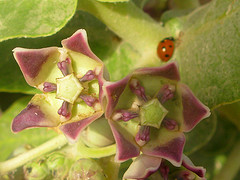Anti-Diarrheal Activity of Ethanolic Extract of Calotropis Procera R. Br. Roots
Calotropis procera R. Br. (Asclepidaceae) is a shrub which widely distribute in the world. The plant is used in the treatment of many disease and disorder both in humans and veterinary application. The present work was undertaken to investigate the anti-diarrhoeal activity of ethanolic extract of root (200 mg/kg BW) of Calotropis procera against castor oil induced diarrhoea in experimental animal and was found to be significant results.
The whole 6 pages article is available for download here.
Plants have been utilized as medicine for thousand of years. These medicine initially took the form of crude drug such as tinctures, teas, poultice, powder, and other herbal formulation, the specific plant to be used and the methods of application for particular ailments were passes down through oral history. Eventually information regarding medicinal plants was recorded in herbals. In more recent history, the uses of plants as medicines have involved the isolation of active compounds. Drug discovery from medicinal plants led to the isolation of early drugs such as cocaine, codeine, digitoxin, and quinine, in additional to morphine, of which some are still in use. Isolation and characterization of pharmacologically active compounds from medicinal plants continue today.
Calotropis procera R. Br. (Asclepidaceae), is a shrub which widely distribute in the world and in India. Mainly plants are not cultivated while plants are found from wild sources. Traditionally the plant is use to cure many disease and disorders viz., pain, anxiety, mental disorders etc.
It is large and stout shrubs 2-4 m height, exuding copious milky sap when cut or broken. Leaves are 10-18 cm long, sessile, decussate, ovate, oblong to elliptic ovate, base cordate, apex obtuse or shortly acuminate, sub-glaburous corolla lobes, spreading, recurved, ovate lanceolate, n uniformly coloured, flower waxy white, petals 5, purple-tipped inside and with a central purplish crown, carried in stalked clusters at the ends of the branches; fruit grey-green, inflated, 8 to 12cm long containing numerous seeds, which are ovoid and 0.6 cm long with a bright silky white coma.
The whole 6 pages article is available for download here.

